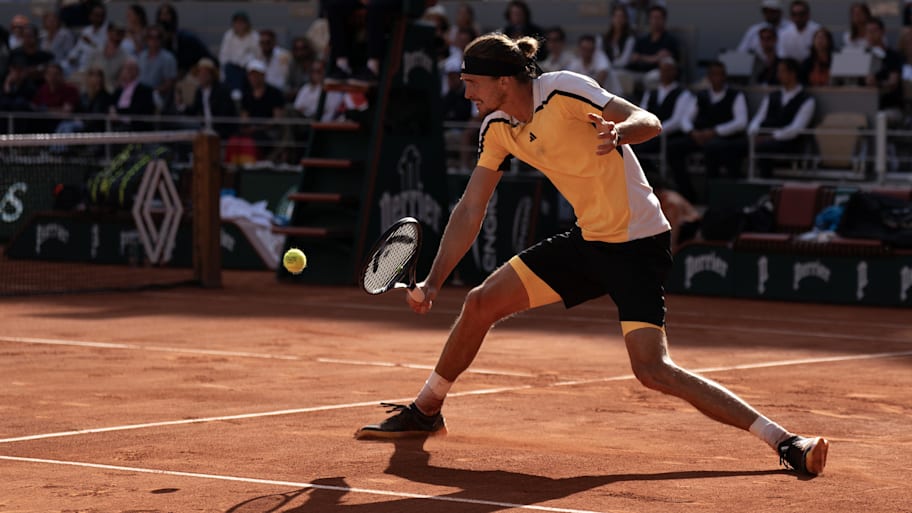
There's no Grand Slam like the French Open, because there's no Grand Slam court like Roland-Garros. It doesn't really matter how powerful a player is or how fast their serves or shots are. Because the red clay court in Paris slows everything down. Many consider this to be tennis at its most grueling and difficult.
This is the tournament that broke Pete Sampras. It pushed Roger Federer to the point of exhaustion and beyond. It has and will continue to give some of the best players on the planet mighty fits. However, it also turned Rafael Nadal into a legend.
Let's break down Roland-Garros and what makes it so unique.
The History of Roland-Garros
The course is named after Roland Garros. Garros wasn't a tennis player, but an aviator during World War I. He was a national hero in France who spent three years in German POW camps and completed multiple missions. He died in aerial combat in 1918, one week before his 30th birthday.
In 1928, France built a stadium to host their defense of the Davis Cup. It was constructed on the outskirts of Paris and called Stade Roland-Garros.
While the French Open dates back to the late 1800s, it moved to Roland-Garros in 1928 and has been held there since.
The French Open: The Only Grand Slam on Clay
The iconic red clay of Roland-Garros is as beautiful as it is brutal. But, technically, the court is white limestone which has been covered with powdered red brick dust. Underneath a three-inch layer of porous limestone is a roughly four inch layer of clinker (coal residue), then about one foot of gravel. The crushed brick powder is pressed into the limestone with rollers and then soaked. This process is repeated multiple times until each court is covered with a thin, compact layer of red brick dust.
The layer of brick dust is deep enough to allow footprints on the court, but thin enough to avoid making the court a slippery mess. However, it is pretty common to see 'clay' stick to and build up on the players' shoes.
When Roland-Garros was constructed in the late 1920s, Roland-Garros was a bit of a phenomenon. Clay tennis courts drained slowly and poorly, which often led to extended periods of waiting after just short rain showers. But Roland-Garros' unique mix of limestone and crushed brick powder provided nearly the same surface as natural clay without any of the drainage problems.
Navigating the Clay Court
Playing on this surface changes everything. Slowing down each shot, the most powerful players lose their advantage. Instead, Roland-Garros often favors those who utilize more spin in their game. Topspin, slices and dropshots are all more effective on the clay court.
The surface is much easier on players' backs, hips, knees and ankles, though. But more often than not, rallies go on for longer stretches, making it extremely physically demanding.
Just take a glance at the list of legendary tennis players who never lifted the Coupe des Mousquetaires or the Coupe Suzanne-Lenglen.
John McEnroe went 82-3 in 1984, perhaps the greatest single season in professional tennis history. But he never won the French Open. Jimmy Connors won 109 singles titles in his illustrious career, but never the French Open (granted, some of this was due to his association with World Team Tennis, which resulted in him being banned from the event between 1974 and 1978. Venus Williams is one of the greatest female athletes of all time, but even she never won the French Open.
Andy Murray, Arthur Ashe, Boris Becker... the list goes on and on.
The point is that Roland-Garros is truly a behemoth to overcome. It is uniquely difficult to master, even for the greatest tennis players in the world.
Rafael Nadal's Dominance at the French Open
You can't talk about the French Open without talking about Rafael Nadal. Because, simply, Nadal has dominated the event.
It's actually mind-boggling to look at Nadal's French Open statistics.
He's won the event 14 times, going 333-37 in his sets there. Against his two biggest rivals, Novak Djokovic and Federer, he had a record of 14-2. He won 39 straight matches at Roland-Garros from 2010-15.
You can read more about Nadal's incredible French Open dominance here.
More on Sports Illustrated
This article was originally published on www.si.com as What Makes Roland-Garros Different? Explaining the French Open Site.







